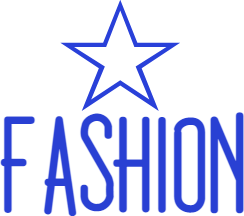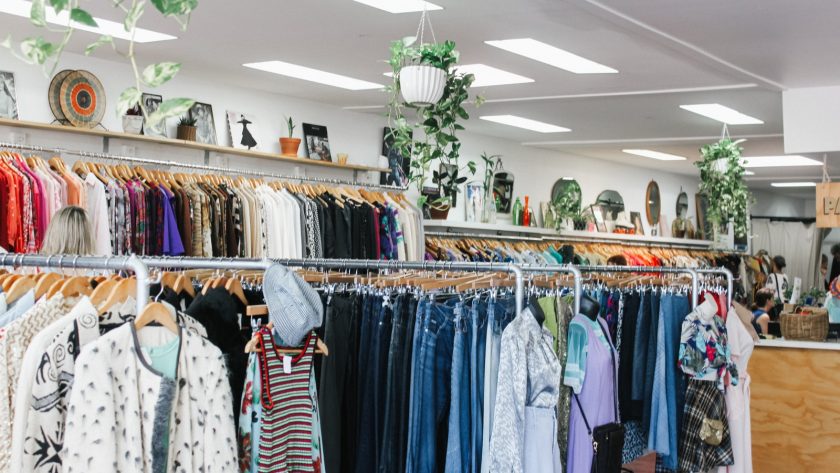The fashion industry has suffered a severe blow since the outbreak of the pandemic. Independent brands have been closing and retail giants have been filing for bankruptcy. Brick-and-mortar shops are still recovering financially from the months during which they had to remain closed due to the lockdown. The resale market has been one of the few areas to see growth in this period.
In the past few years, secondhand sellers and online consignment sites have already seen promising signs. According to the 2020 Resale Report by thredUP, resale grew 25x faster than retail in 2019. In 2019, 62M women bought secondhand products in 2019, up from 56M in 2018 or 44M in 2017. This growth was not slowed by the pandemic.
The pandemic has increased consumer interest in secondhand clothing. Fanny Moizant, co-founder and president of Vestiaire Collective, says that in May, orders increased by 119 per cent and in June, they increased further to 144% compared to the previous year. Fashionphile founder Sarah Davis says that on April 15, the company selling used designer handbags and accessories had the highest non-promotional sales day ever. “We were shocked, but a few weeks later, we beat those numbers and have beaten it over and over again since then.” Rebag, a luxury handbag and accessories resale business, also saw higher activity than on its busiest days last year, such as Cyber Monday and Black Friday. Depop’s SVP Growth Marketing, Ianina Lucca says the platform had a “record breaking performance in all of our key markets and have seen consistent triple-digit growth on the platform since April.”
Part of this is due to the pandemic that stopped IRL shopping. Most retailers and secondhand shops closed their doors, forcing customers to shop online. Although the pandemic affected fashion in general, many consumers still shop secondhand at online vendors. Charles Gorra (CEO and founder of Rebag), says that while some stores have reopened, most customers feel more secure shopping online. The quarantine-induced boredom, which led many people to browse shopping websites in their spare moments, is another factor. Online resale offers people who are unable to leave their homes an enjoyable way to shop from the comfort of their couches. Erin Wallace, VP for Integrated Marketing at thredUP says that May was a record-breaking month in terms of new visitors.
There are still other signs to show that the rise in secondhand sales is not just due to the pandemic. It could be a sign that 2021 will finally be the year that we start shopping secondhand. What is causing this shift?
Sustainability is a key factor
Many people have started to shop secondhand for sustainable reasons even before 2020. Wallace says that while the pandemic sparked the move to online thrifting, resale’s bright spots aren’t just a flash in the pane. According to thredUP, 70% of consumers believe that climate change mitigation is crucial. It is possible to reduce your fashion footprint by choosing used over new. Wallace says that if everyone in the U.S. purchased one used item, it would save 6B pounds of carbon emissions. This is equivalent to taking half a million cars off of the road for a year. By extending the garment’s life, you can offset the negative effects of fashion waste. This is done by diverting the items from landfills and making use of the natural resources that were used to make them.
Although sustainability was a topic that many people were concerned about before the pandemic struck, many have had to reconsider their commitments and values in the wake of the crisis. Many people have had to rethink their values after COVID-19. Sustainability has never been more pressing. Many consumers are asking how they can be more responsible about fashion trends. Moizant says that secondhand fashion is becoming more popular due to a greater emphasis on quality and buying less. According to Vestiaire, ethically and sustainable brands saw a rise in demand. Stella McCartney, a luxury sustainability veteran, experienced a 42% increase in sales. Other brands such as LOQ and Marine Serre also saw an increase in sales. It’s not difficult to see that the fashion industry is among the most polluting. A piece of clothing can last 3.3 years on average. Extending its life span can have a significant impact on the environment. Pre-owned clothing can be reused for up to nine months, which can help reduce its carbon footprint by between 20 and 30 percent.” She says that the best way to shop sustainably is to buy something that has been worn and keep it in circulation as long as possible.
Consumers are increasingly choosing to shop at local mom-and pop shops, as the pandemic has placed a significant financial burden on small-scale independent stores. The online marketplace Thrilling that sells vintage and secondhand clothing made by independent businesses across the country saw its sales double since the pandemic. We have enough clothing to last generations. Shilla Kim Parker, founder and CEO of Thrilling, says that secondhand shopping is not only more sustainable for the planet but also helps small, independent mom-and-pop shops which are essential to all local economies.
Price is crucial in times of economic instability
Secondhand is often cheaper. This is not surprising considering the fact that millions of people lost their jobs due to the pandemic. According to thredUp, 82% of respondents are willing to shop secondhand if money is tight. Wallace says that online thrifting was popularized by consumers after the pandemic caused economic uncertainty and increased time at home.
Davis agrees. The article stated that more than 60% of shoppers made a purchase to improve their self-esteem. It is important to feel better during this time. She says that it’s a time of uncertainty and people are always looking for bargains. Secondhand shopping is more affordable than traditional retail. People will often look for deals in secondhand shops when they are looking for bargains. This has been a trend for a while, but it is especially evident during the current pandemic. People are more careful about what they buy and often look to the secondary markets to help them do so.
As we enter what many predict to be the worst depression in history, prices will continue being a significant deciding factor in what consumers buy.
Consumers are searching for investment opportunities
Consumers will be more concerned about the long-term worth of fashion items in the future. This may lead to more luxury goods investment as an option. Consumers will be searching for fashion that will last longer and can be resold if finances become tighter. Davis says that only high-quality products can be bought and sold again and again. “Some Fashionphile bags have been repurchased, sold, rebought, and sold five to six times.” This is possible because of the quality of the products.
Sasha Skoda is head of Women’s at The RealReal and says that the pandemic has triggered unexpected luxury spending. Skoda says that it’s been fascinating to see where shoppers choose to invest in the pandemic. This is especially true for millennials, who are known for their desire to invest in experiences. She also notes that handbags with high-value materials, such as Hermes’ Kelly bag, have seen a 42% increase year-over-year in interest. “Millennials purchased more Hermes handbags than any other age group last quarter.” We have also witnessed strong interest in high value watches since March. This was the highest year-over year increase among millennials.
Rebag reports that Louis Vuitton’s Favorite Bag is the site’s most popular selling item. This was followed by Chanel’s Classic Flap Bag, and Dior’s vintage Saddle Bag. The first two styles are from some of the most well-known luxury brands. They’re versatile and classic, making them great additions to any collection. Gorra says that the Vintage Saddle Bag by Dior has been gaining popularity due to its affordable price, at least compared to the newer version. While luxury is still a popular option, customers are becoming more practical with their purchases.
What do people buy from resale sites?
What else are people buying? The RealReal reported a 24% increase in silk scarves demand from mid-March through mid-April. Skoda says that this demand was likely driven by the desire for polished, comfortable looks for video meetings and CDC recommendations about face coverings. “We saw a 19% increase in silk scarf sales when the CDC issued that recommendation on April 3.” Davis says. We expect that this trend will continue, and we’ll still be seeing steady sales.
The video conferencing platform is the topic of this article. According to thredUP data, the “Zoomshirt” was a COVID trend in shopping, with blouses/tops sales up 30% in April, compared to February. According to Thrilling tops and dresses performed better than pants in the past few months, with caftans being its most popular category. Kim-Parker says that tops and dresses are comfortable in the summer heat, easy to wear, and stylish.
Depop, Vestiaire Collective and thredUp saw loungewear sales rise, as was not surprising. Depop noticed an increase in loungewear searches globally at the start of lockdown. This was expected considering the fact that most people are staying at home. Lucca says that we also saw an increase in searches on other categories, such as sportswear and Y2K-style clothing. Also, there was a rise in searches for skorts, which are trending items for Gen Z. These trending searches clearly reflect current events and seasonality, and our users seem to be looking for items that offer comfort, style and self-expression all while they are at home.
Is this a trend that will continue?
We spoke with all the resale businesses that we interviewed for this story and they agree that secondhand shopping isn’t going away soon. Kim-Parker says that while the majority of U.S. consumers were open to secondhand shopping in general, the pandemic has only increased the popularity of secondhand shopping online. “Secondhand almost always provides better value – higher-quality items at a lower price point – and consumers are shopping more according to their values. Moizant also agrees that resale offers many of the attributes consumers are looking for. “Consumers are becoming more focused on sustainability and online shopping. They also want the exclusivity of vintage and one-of-a kind pieces. Many of these pieces are easier to find on the resale marketplace.”
This is because Gen Z is committed towards tackling climate change, and Millennials are also increasingly concerned about the environmental impact of fashion. We believe secondhand shopping will increase due to Gen Z and Millennials gaining more spending power. Gorra says that secondhand shopping appeals to them because it aligns with their preference for sustainable shopping options. “Resale is only one spoke of the circular economy. It is appealing because it has minimal impact on the environment and also because it offers accessible value purchases. This is very important in a post-recession world.” Depop saw a rise in Gen Zers selling on its platform during pandemic. Lucca says that “our community is champions of circular fashion movement and their expectation of customers across the board to be more mindful about the environment when shopping after the pandemic ends.”
The thredUp report projects that the market for secondhand goods, currently valued at $28B, will grow to $64B within five years. It predicts that in 10 years, resale will outstrip fast fashion. Closets will have more used and discounted clothing than any other category. The resale market is growing year after year. We expect the secondhand market to continue growing as consumers seek value, sustainability, convenience, and other benefits. We see no sign of the secondhand marketplace slowing down as shoppers continue to scrutinize the companies and brands they support to ensure they are protecting their wallets and the environment.










